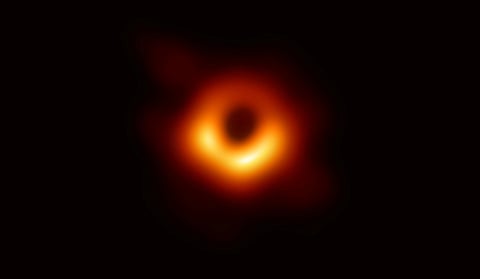It matters who we champion in science
It’s great to celebrate individual scientists, but we can’t let others get lost

Also In This Package
The world’s first-ever image of a black hole took over science Twitter last week, thanks to an algorithm that stitched together data generated by a global network of eight radio observatories, collectively called the Event Horizon Telescope. Within a few hours, the algorithm had a face: Katherine Bouman.
Bouman, 29, is a computer scientist who was part of the team that generated the historic image. Shortly after the discovery was announced, MIT’s Computer Science & Artificial Intelligence Lab tweeted a photo of a stunned and overjoyed Bouman taken the moment the black hole’s image was processed.
Within 48 hours, Bouman was celebrated across international media, her new Wikipedia entry has been translated into about 20 languages, and there have even been exuberant calls for her to win a Nobel Prize. In Bouman’s expression, we were reminded of the pure joy that comes with discovery. It is no surprise that the photo went nearly as viral as the image she helped produce. The world had a new hero.
Bouman’s newfound visibility highlights the power of social networks to lift up those who might otherwise go unrecognised. Discoveries this epic are typically attributed to one or a few men, so Bouman’s prominence in the narrative was refreshing. Social media platforms such as Twitter and community-led information resources such as Wikipedia democratise access to and the dissemination of information. So the people have power over who we champion.
But what happens to the scientists who don’t catch fire online? The world knows about Bouman because social media needed a hero to attribute this historic achievement. But many equally impressive women stay under the radar and are subsequently erased from the history books.
The reasons for this range from systematic bias in authorship to grant allocation and publishing to the decisions of journalists on whose stories they tell. Over the past few years, we’ve taken the initiative to write hundreds of Wikipedia entries with the goal of giving forgotten scientists — especially women — the recognition they deserve for their work.
Take Clarice Phelps, the first African American woman to be part of team that discovered a superheavy element. Phelps purified the berkelium-249 that was used in the discovery and identification of Tennessine (element 117), named after the location of the lab where she works. But Phelps was not named in the official announcement and was not profiled by international newspapers. Without these crucial pieces of recognition, her biography was quickly deemed not appropriate for Wikipedia.
While Bouman’s contributions were crucial to processing the image of the black hole, the breakthrough was the result of an international collaboration involving more than 300 scientists, many of whom are women who have not gained similar traction for their contributions. While some figures become the faces of a given discovery, discoveries of this magnitude are not the work of isolated geniuses in a moment of brilliance. Rather, science is a collaborative global endeavour that builds on our collective knowledge and experiences.
When we overlook the many people along the way who have contributed their expertise, enthusiasm and energy, we fundamentally misrepresent how science is done. As Bouman herself wrote: “The spotlight should be on the team and no individual person. Focusing on one person like this helps no one, including me.”
Science is never the work of one person; it is the collaborative effort of students, technicians, professors, librarians and the support networks around them. Though their names may not make it to publication or circulate in the media, their contributions are no less important. Who we credit and champion matters.
Last week, millions of girls and women around the world who have been told science is not for them found a new role model in Bouman — a new data point that told them yes you can. Within this achievement, there are hundreds of stories to tell — stories that deepen our understanding of the universe, teach us how science works and have the power to change the face of who gets to do science. We would do well to find them. Today we celebrate Bouman, while seeking out the untold stories about others like her.
— Washington Post
Maryam Zaringhalam is a molecular biologist and science and technology policy fellow with the American Association for the Advancement of Science. Jess Wade is a research associate in the physics department at Imperial College London.
Sign up for the Daily Briefing
Get the latest news and updates straight to your inbox




